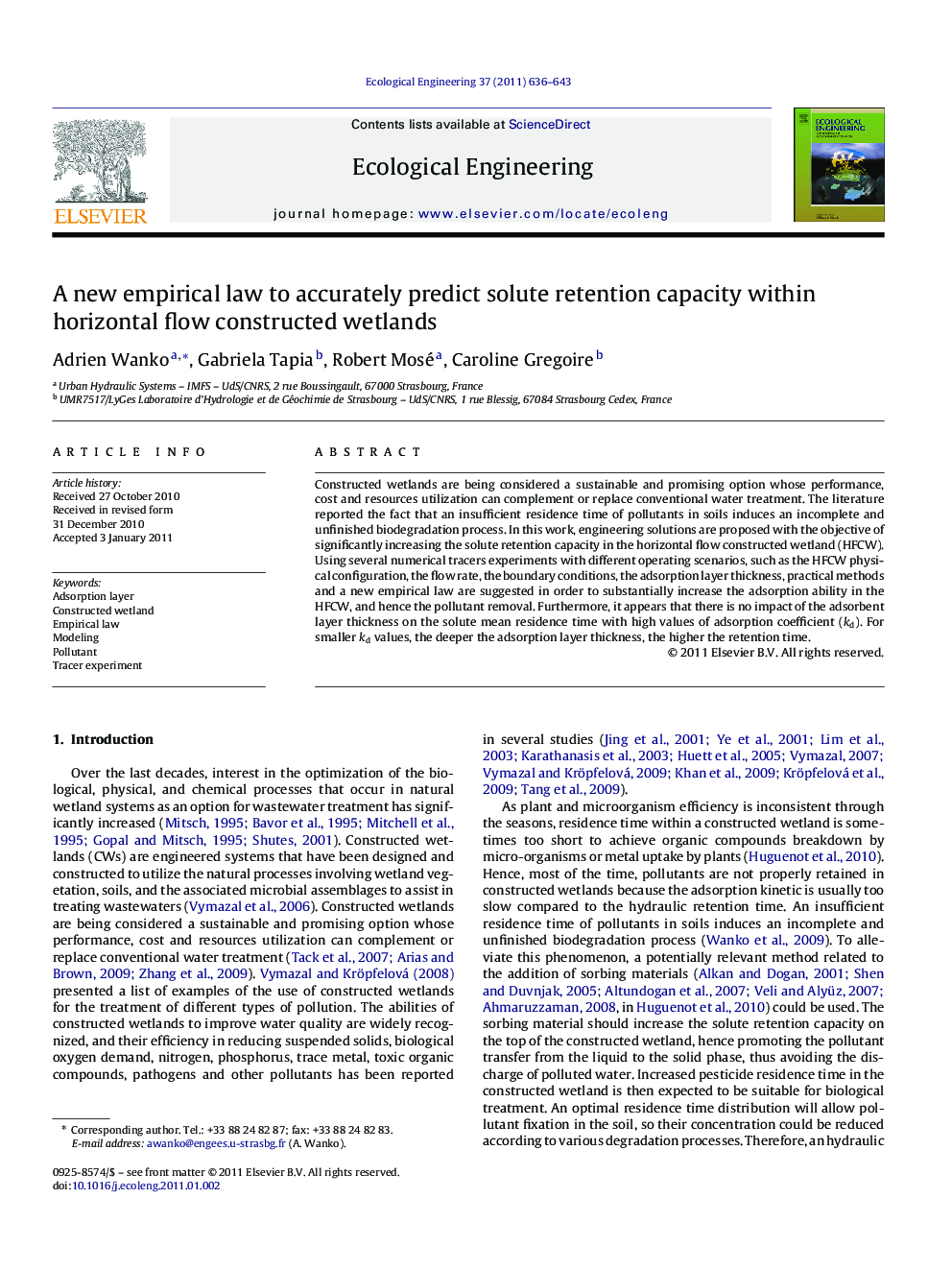| Article ID | Journal | Published Year | Pages | File Type |
|---|---|---|---|---|
| 4390302 | Ecological Engineering | 2011 | 8 Pages |
Constructed wetlands are being considered a sustainable and promising option whose performance, cost and resources utilization can complement or replace conventional water treatment. The literature reported the fact that an insufficient residence time of pollutants in soils induces an incomplete and unfinished biodegradation process. In this work, engineering solutions are proposed with the objective of significantly increasing the solute retention capacity in the horizontal flow constructed wetland (HFCW). Using several numerical tracers experiments with different operating scenarios, such as the HFCW physical configuration, the flow rate, the boundary conditions, the adsorption layer thickness, practical methods and a new empirical law are suggested in order to substantially increase the adsorption ability in the HFCW, and hence the pollutant removal. Furthermore, it appears that there is no impact of the adsorbent layer thickness on the solute mean residence time with high values of adsorption coefficient (kd). For smaller kd values, the deeper the adsorption layer thickness, the higher the retention time.
